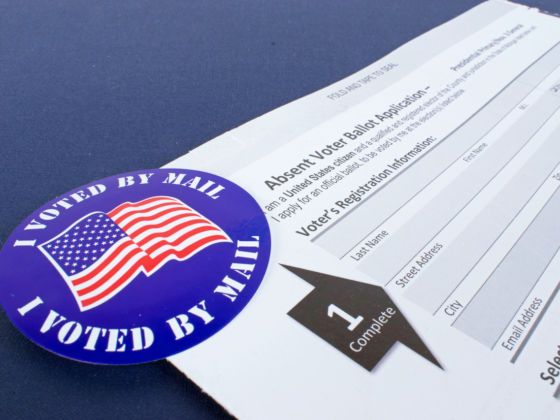Americans are taught early on that voting is a right. Every fourth November, and increasingly during primary and local elections, eligible voters are reminded to register, hit the polls, and do their civic duty. They’re not told where the polls are or how to cast a ballot. And there’s rarely any mention of what to do if you’re unable to hit your local polling station come Election Day.

For overseas and out-of-state Americans, uncertainty about absentee ballots might dissuade voters. But voting is our right and our civic duty. And it’s easier than you might think no matter where in the world you are. Here are all your questions about absentee voting answered.
Editor’s Note: The information below is subject to change during the 2020 presidential election due to COVID-19. As the situation unfolds, stay apprised of your state’s voting protocol here.
- What’s an absentee ballot?
- Who’s eligible for an absentee ballot?
- Is absentee voting different from mail-in voting?
- How can I register to vote from a different country?
- What about voting in a different state?
What’s an absentee ballot?
In the United States, most votes are cast in person. Registered voters show up to their local polling station determined by their address, fill out their ballot, and leave with an “I Voted” sticker as validation for exercising their civic responsibility. Absentee ballots were designed to give voters who are unable to cast their ballots in person on Election Day a mail-in alternative. Traditionally, this included military members and families stationed overseas and other overseas citizens.
Who’s eligible for an absentee ballot?
Voter registration is decided at the state level, meaning the rules around absentee voting vary. Per a 1986 voting act, all 50 states are required to provide absentee ballots to military members and other US citizens living abroad. Others may also qualify as absentee voters. This might include voters with illnesses, injuries, or disabilities; students who attend college or university out of state; election workers or those on jury duty; business or leisure travelers; incarcerated citizens who are eligible to vote; or those with religious conflicts.
Currently, 29 states and Washington, DC, allow no-excuse absentee voting, meaning voters do not need to provide a reason when applying for a mail-in ballot. Sixteen states do require excuses, and five states conduct elections exclusively by mail. Find more information on a state’s rules for absentee voters on the National Conference of State Legislatures’ website.
Is absentee voting different from mail-in voting?
Yes and no. Though the terms are sometimes used interchangeably, mail-in voting can refer to any ballot that is submitted by mail whereas absentee voting refers specifically to ballots cast under conditions that prevent in-person voting. These ballots must be requested and approved while some mail-in ballots are sent to voters automatically.
The language can be tricky here. You may see references to mail, mailed, mail-in, by-mail, all-mail, advance, and early voting when researching your state’s election rules. Consult this voting guide from the Federal Voting Assistance Program (FVAP) if you have questions.
How can I register to vote from a different country?
First thing’s first: Overseas voters must be registered to vote in the US to apply for an absentee ballot. Then, it’s a two-step process: First, voters are required to submit a Federal Post Card Application (FPCA). FPCAs can be filled out online or requested at a US embassy or consulate and returned by mail, fax, or email. The State Department recommends that absentee voters apply at the beginning of the year or at least 45 days before an election. Overseas voters must complete a new FPCA every year or every time they move.
Once approved, absentee voters can expect to receive a mail-in ballot 45 days before November general elections or 30 days before primary and special elections. Note that some states only send absentee ballots for federal elections. Voters must then complete and return their ballots according to their state’s deadline. Ballots can be mailed, sent via courier service like UPS or FedEx, or returned to a US consulate or embassy addressed to the voter’s local election officials in a pre-paid envelope. Some states send and accept ballots by fax or electronically, as well. Refer back to the FVAP voting guide to check your state’s policies.
In the event that a mail-in ballot does not arrive within a month of Election Day, overseas voters can fill in the emergency Federal Write-In Absentee Ballot (FWAB). Should their state ballot arrive after they’ve submitted the FWAB, voters should still submit and complete their state ballot. Only one vote will be counted toward the election in question.
What about voting in a different state?
Because voting operates at the state level, voters living outside of the state they’re registered in during elections may be eligible for an absentee ballot. This is particularly common among out-of-state college students. In such cases, voters with temporary addresses can generally choose to vote absentee for their home state or re-register to vote in the state they’re living in when elections are held. This may be a strategic choice, decided by where a voter thinks their ballot will have the most impact, or a matter of convenience. That’s up to the voter.